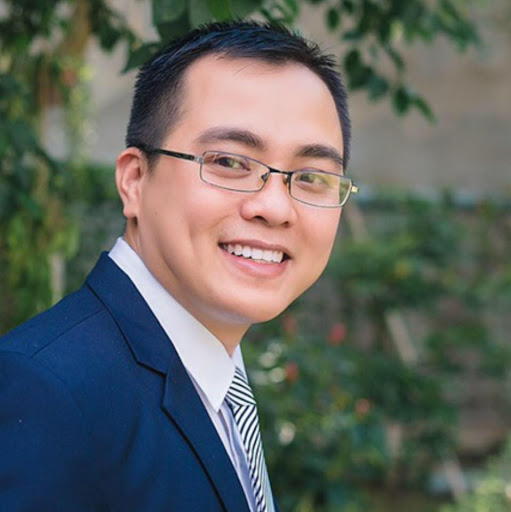Liem Thi Nguyen
age ~63
from San Francisco, CA
- Also known as:
-
- Liem T Nguyen
- Thi Nguyen Liem
- Hem Nguyen
- Lien T Nguyen
- Nguyen L Thi
- Liam Nguyen
- Nguyen Liem Thi
- Nguyen Hem
- Phone and address:
-
1378 Thomas Ave, San Francisco, CA 94124
4153353653
Liem Nguyen Phones & Addresses
- 1378 Thomas Ave, San Francisco, CA 94124 • 4153353653
- San Jose, CA
Resumes

Liem Nguyen Albuquerque, NM
view sourceWork:
Intel Corporation
Jan 2014 to 2000
Software Developer Intel Corporation
Jun 2004 to 2000
Software Developer Intel Corporation
Rio Rancho, NM
Oct 2013 to Dec 2013
Software Developer Intel Corporation
Jul 2013 to Aug 2013
Software Developer Intel Corporation
May 2013 to Jun 2013
Software Developer Intel Corporation
Jan 2013 to Feb 2013
Software Developer Intel Corporation
Nov 2012 to Dec 2012
Software Developer Intel Corporation
Sep 2012 to Oct 2012
Software Developer Intel Corporation
Feb 2012 to Aug 2012
Software Developer Intel Corporation
Jun 2011 to Oct 2011
Software Developer Intel Corporation
Feb 2010 to May 2010
Software Developer Intel Corporation
Nov 2007 to Dec 2009
Software Developer Intel Corporation
Jul 2007 to Oct 2007
Software Developer Intel Corporation
Jul 2007 to Oct 2007
Software Developer Intel Corporation
Jul 2007 to Oct 2007
Software Developer Intel Corporation
Apr 2006 to Jun 2007
Software Developer Intel Corporation
Mar 2006 to Apr 2006
Software Developer Intel Corporation
Jan 2006 to Feb 2006
Software Developer Intel Corporation
Rio Rancho, NM
Jul 2005 to Dec 2005
Software Developer Intel Corporation
Rio Rancho, NM
Jan 2005 to Jun 2005
Software Developer Intel Corporation
Rio Rancho, NM
Jun 2004 to Dec 2004
Software Developer Intel Corporation
Santa Clara, CA
May 2002 to Jan 2003
Graduate Technical Intern Philips Semiconductors
Albuquerque, NM
May 1999 to Jul 2001
Application Engineer Philips Semiconductors
Albuquerque, NM
Nov 1998 to May 1999
Applications Engineer Co-op NASA's ACE in EECE Department UNM
Albuquerque, NM
May 1998 to Nov 1998
Research Assistant
Jan 2014 to 2000
Software Developer Intel Corporation
Jun 2004 to 2000
Software Developer Intel Corporation
Rio Rancho, NM
Oct 2013 to Dec 2013
Software Developer Intel Corporation
Jul 2013 to Aug 2013
Software Developer Intel Corporation
May 2013 to Jun 2013
Software Developer Intel Corporation
Jan 2013 to Feb 2013
Software Developer Intel Corporation
Nov 2012 to Dec 2012
Software Developer Intel Corporation
Sep 2012 to Oct 2012
Software Developer Intel Corporation
Feb 2012 to Aug 2012
Software Developer Intel Corporation
Jun 2011 to Oct 2011
Software Developer Intel Corporation
Feb 2010 to May 2010
Software Developer Intel Corporation
Nov 2007 to Dec 2009
Software Developer Intel Corporation
Jul 2007 to Oct 2007
Software Developer Intel Corporation
Jul 2007 to Oct 2007
Software Developer Intel Corporation
Jul 2007 to Oct 2007
Software Developer Intel Corporation
Apr 2006 to Jun 2007
Software Developer Intel Corporation
Mar 2006 to Apr 2006
Software Developer Intel Corporation
Jan 2006 to Feb 2006
Software Developer Intel Corporation
Rio Rancho, NM
Jul 2005 to Dec 2005
Software Developer Intel Corporation
Rio Rancho, NM
Jan 2005 to Jun 2005
Software Developer Intel Corporation
Rio Rancho, NM
Jun 2004 to Dec 2004
Software Developer Intel Corporation
Santa Clara, CA
May 2002 to Jan 2003
Graduate Technical Intern Philips Semiconductors
Albuquerque, NM
May 1999 to Jul 2001
Application Engineer Philips Semiconductors
Albuquerque, NM
Nov 1998 to May 1999
Applications Engineer Co-op NASA's ACE in EECE Department UNM
Albuquerque, NM
May 1998 to Nov 1998
Research Assistant
Education:
University of New Mexico
Albuquerque, NM
2001 to 2004
Completed all required courses for MSEE in Computer Engineering The University of New Mexico
Albuquerque, NM
1995 to 1999
B.S. - Graduated Magna Cum Laude in Computer Engineering
Albuquerque, NM
2001 to 2004
Completed all required courses for MSEE in Computer Engineering The University of New Mexico
Albuquerque, NM
1995 to 1999
B.S. - Graduated Magna Cum Laude in Computer Engineering
Medicine Doctors

Dr. Liem T Nguyen, San Jose CA - DDS (Doctor of Dental Surgery)
view sourceSpecialties:
Dentistry
Address:
60 Senter Rd, San Jose, CA 95111
4082241919 (Phone)
4082241919 (Phone)
Languages:
English

Liem T. Nguyen
view sourceSpecialties:
Family Medicine
Work:
Liem T Nguyen MD
6828 Commerce St STE 101, Springfield, VA 22150
7039131733 (phone)
6828 Commerce St STE 101, Springfield, VA 22150
7039131733 (phone)
Education:
Medical School
Med & Pharm Univ, Ho Chi Minh City, Vietnam (942 01 Eff 1/83)
Graduated: 1972
Med & Pharm Univ, Ho Chi Minh City, Vietnam (942 01 Eff 1/83)
Graduated: 1972
Conditions:
Abnormal Vaginal Bleeding
Acne
Acute Bronchitis
Acute Conjunctivitis
Acute Pharyngitis
Acne
Acute Bronchitis
Acute Conjunctivitis
Acute Pharyngitis
Languages:
English
Spanish
Vietnamese
Spanish
Vietnamese
Description:
Dr. Nguyen graduated from the Med & Pharm Univ, Ho Chi Minh City, Vietnam (942 01 Eff 1/83) in 1972. He works in Springfield, VA and specializes in Family Medicine.

Liem Nguyen, San Jose CA
view sourceSpecialties:
Counseling
Address:
160 E Virginia St Suite 280, San Jose, CA 95112
4082876200 (Phone), 4089981535 (Fax)
4082876200 (Phone), 4089981535 (Fax)
Languages:
English

Liem Thanh Nguyen
view sourceSpecialties:
Family Medicine
Education:
University Of Medicine Of Ho Chi Minh City (1972)

Liem Thiet Nguyen, San Jose CA
view sourceSpecialties:
Dentist
Address:
60 Senter Rd, San Jose, CA 95111

Liem Nguyen, San Jose CA
view sourceSpecialties:
Psychotherapist
Address:
160 E Virginia St, San Jose, CA 95112
License Records
Liem T. Nguyen
License #:
PIC.015551 - Active
Issued Date:
Mar 29, 1994
Expiration Date:
Dec 31, 2017
Type:
Pharmacist-in-Charge (V)
Liem T. Nguyen
License #:
PST.015551 - Active
Issued Date:
Mar 29, 1994
Expiration Date:
Dec 31, 2017
Type:
Pharmacist
Liem T Nguyen
License #:
1206010843
Category:
Nail Technician License
Liem Thanh Nguyen Rp
License #:
10055 - Active
Category:
Pharmacy
Issued Date:
Oct 1, 1986
Expiration Date:
Jan 1, 2018
Type:
Pharmacist
Liem Thanh Nguyen
License #:
MT007637T - Expired
Category:
Medicine
Type:
Graduate Medical Trainee
Name / Title
Company / Classification
Phones & Addresses
Director
Sti California Inc
Electrical Apparatus and Equipment Wiring Sup...
Electrical Apparatus and Equipment Wiring Sup...
46753 Fremont Blvd, Fremont, CA 94538
President
VIETNAMESE INTERFAITH COUNCIL OF CALIFORNIA
Business Services at Non-Commercial Site · Nonclassifiable Establishments
Business Services at Non-Commercial Site · Nonclassifiable Establishments
237 Summerfield Dr, Milpitas, CA 95035
President
L & D SERVICE STATION, INC
Gasoline Service Station
Gasoline Service Station
960 S King Rd, San Jose, CA 95116
4087702539
4087702539
Principal
American Homes Realty
Real Estate Agent/Manager
Real Estate Agent/Manager
1171 Brandybuck Way, San Jose, CA 95121
Principal
Nguyen T Liem
Nonclassifiable Establishments
Nonclassifiable Establishments
10162 Judy Ave, Cupertino, CA 95014
Principal
Liem Pcb
Business Services at Non-Commercial Site
Business Services at Non-Commercial Site
1311 Kane Ct, San Jose, CA 95121
West San Carlos Court Apartments LLC
Residential/Comercial Rental · Apartment Building Operator
Residential/Comercial Rental · Apartment Building Operator
10162 Judy Ave, Cupertino, CA 95014
Owner
Diamond Nails
Beauty Shop · Nail Salons
Beauty Shop · Nail Salons
22158 Redwood Rd, Hayward, CA 94546
5105378865
5105378865
Us Patents
-
Methods And Compositions For Mutation Analysis Of Polynucleotides By Liquid Chromatography
view source -
US Patent:7135289, Nov 14, 2006
-
Filed:Oct 7, 2002
-
Appl. No.:10/266906
-
Inventors:Paul D. Taylor - Gilroy CA, US
Liem T. Nguyen - San Jose CA, US -
Assignee:Transgenomic, Inc. - Omaha NE
-
International Classification:C12Q 1/68
A61K 7/075
A01N 57/26 -
US Classification:435 6, 510123, 514 77
-
Abstract:Methods, compositions, and kits for separating heteroduplex and homoduplex DNA molecules in a test mixture by temperature-compression denaturing high performance liquid chromatography (tcDHPLC). The method includes use of nitrogen-containing additives in the mobile phase that allow detection of diverse heteroduplex molecules to be performed at the same pre-selected temperature. An example of a preferred additive is betaine. Standard mixtures of DNA fragments, such as mutation standards containing known heteroduplex and homoduplex molecules, can be used to select the concentration of additive and temperature. Compositions and kits including the mobile phase, mutation standards, PCR primers, separation media, and DNA polymerase are also provided.
-
Techniques For Distributing Information Using Multicast Subsets
view source -
US Patent:7623474, Nov 24, 2009
-
Filed:Feb 14, 2006
-
Appl. No.:11/353544
-
Inventors:Thuan Van Tran - Cary NC, US
Yi Yang - Morrisville NC, US
Liem Nguyen - San Jose CA, US
Russell White - Holly Springs NC, US
Donnie Van Savage - Raleigh NC, US -
Assignee:Cisco Technology, Inc. - San Jose CA
-
International Classification:H04L 12/26
-
US Classification:370255, 370390
-
Abstract:Techniques for sending data in a packet-switched communications network include determining multiple subsets of adjacent network nodes of the network. The adjacent network nodes communicate without intervening network nodes with a particular network node through an interface on the particular network node. Each subset includes multiple adjacent network nodes. Subset definition data is sent through the interface. The subset definition data indicates which adjacent network nodes belong to which subset. Data for fewer than all adjacent network nodes in all subsets are sent by including, in a multicast data packet sent over the interface with a multicast destination address, subset identifier data that indicates a particular subset. When such data is received by a node, it is discarded unless the subset identifier matches the receiving node's subset identifier. Among other effects, this allows routing messages to be more efficiently sent to better performing neighboring network nodes.
-
Out Of Band Data Base Synchronization For Ospf
view source -
US Patent:7639680, Dec 29, 2009
-
Filed:Oct 4, 2001
-
Appl. No.:09/971298
-
Inventors:Abhay Kumar Roy - San Jose CA, US
Alexey Dimitrievich Zinin - Cupertino CA, US
Liem Hong Nguyen - Apex NC, US -
Assignee:Cisco Technology, Inc. - San Jose CA
-
International Classification:H04L 12/56
-
US Classification:370389, 370221, 370386, 370400, 370408, 370503, 707201
-
Abstract:A method and apparatus resynchronizes a link state database (LSDB) of a non-stop forwarding (NSF) router with the LSDB of a neighboring router (“neighbor”) while maintaining an existing adjacency with the neighbor in a computer network. An out-of-band resynchronization process executes on the routers to essentially maintain the existing adjacency between the router and neighbor, rather than resetting that adjacency as defined by a conventional resynchronization approach. By keeping the adjacency “up” from the perspective of a routing protocol, such as the Open Shortest Path First routing protocol, the adjacency can be used for continued data traffic to and from the NSF router.
-
System And Method For Improving Network Performance By Controlling Stub-Routing Behavior
view source -
US Patent:7898981, Mar 1, 2011
-
Filed:Mar 31, 2006
-
Appl. No.:11/394587
-
Inventors:Thuan Van Tran - Cary NC, US
Liem H. Nguyen - San Jose CA, US
Donnie Van Savage - Raleigh NC, US
Yi Yang - Morrisville NC, US -
Assignee:Cisco Technology, Inc. - San Jose CA
-
International Classification:H04L 12/28
-
US Classification:370254, 370401, 709242
-
Abstract:A system and method for enhancing the behavior of a network. In an illustrative embodiment, the network includes a distribution router and plural additional routers connected to the distribution router. The system includes a first module that is adapted to characterize the additional routers as stub routers or non-stub routers and then to provide a signal in response thereto. A second module selectively queries non-stub routers for route information and does not query stub routers for the route information. In a more specific embodiment, the second module includes a unicast module for selectively unicasting queries to the non-stub routers. A multicast module selectively multicasts queries to the non-stub routers via a modified conditional-receive algorithm.
-
Three-Dimensional Solid Phase Extraction Surfaces
view source -
US Patent:20040224329, Nov 11, 2004
-
Filed:Jan 8, 2004
-
Appl. No.:10/754775
-
Inventors:Douglas Gjerde - Saratoga CA, US
Christopher Hanna - San Francisco CA, US
Liem Nguyen - San Jose CA, US
Leon Yengoyan - San Jose CA, US -
International Classification:C12Q001/68
C12M001/34 -
US Classification:435/006000, 435/287200
-
Abstract:The subject invention provides extraction capillaries, wherein a substantial portion of the channel is coated with a 3-dimensional solid phase extraction surface that binds an analyte. In some embodiments the extraction matrix comprises a polymer backbone with an extraction agent bound thereto. Analytes of particular relevance include biomolecules, such as proteins, polynucleotides, lipids and polysaccharides. The invention further provides devices comprising the extraction capillaries, reagents for use in conjunction with the capillaries and devices, and methods for the production and use of the capillaries and devices.
-
Method And Device For Extracting An Analyte
view source -
US Patent:20050258097, Nov 24, 2005
-
Filed:Jun 17, 2005
-
Appl. No.:11/155464
-
Inventors:Douglas Gjerde - Saratoga CA, US
Christopher Hanna - San Francisco CA, US
Jeremy Lambert - Worcester MA, US
Liem Nguyen - San Jose CA, US -
International Classification:B01D015/08
-
US Classification:210635000, 210656000, 436161000, 436177000
-
Abstract:The invention provides extraction columns for the purification of an analyte (e.g., a biological macromolecule, such as a peptide, protein or nucleic acid) from a sample solution, as well as methods for making and using such columns. The columns typically include a bed of extraction media positioned in the column between two frits. In some embodiments, the extraction columns employ modified pipette tips as column bodies. The invention also provides methods for using the extraction columns including methods for varying parameters, such as the volume of sample loaded, the number of capture cycles performed, and the number or wash cycles performed to achieve a particular desired result.
-
Method And Device For Desalting An Analyte
view source -
US Patent:20060118491, Jun 8, 2006
-
Filed:Dec 1, 2005
-
Appl. No.:11/292707
-
Inventors:Douglas Gjerde - , US
Liem Nguyen - San Jose CA, US
Ronald Jones - Morgan Hill CA, US
Christopher Holman - Overland Park KS, US -
International Classification:B01D 15/08
-
US Classification:210656000, 210198200, 436161000, 422070000, 435007100
-
Abstract:The invention provides extraction columns for the purification of an analyte (e.g., a biological macromolecule, such as a peptide, protein or nucleic acid) from a sample solution, as well as methods for making and using such columns. The columns typically include a bed of extraction media positioned in the column between two frits. In some embodiments, the extraction columns employ modified pipette tips as column bodies. In some embodiments, the invention provides methods and devices for desalting and/or buffer exchange of a sample.
-
Pipette Tip Column, Resin And Method Of Use For Extracting An Analyte
view source -
US Patent:20080119637, May 22, 2008
-
Filed:Nov 20, 2007
-
Appl. No.:11/986335
-
Inventors:Douglas T. Gjerde - Saratoga CA, US
Liem Nguyen - San Jose CA, US
Jeremy Lambert - Worcester MA, US -
International Classification:C07K 1/02
-
US Classification:530334
-
Abstract:The invention provides extraction columns for the purification of an analyte (e.g., a biological macromolecule, such as a polypeptide or protein) from a sample solution, as well as methods for making and using such columns. The columns typically include a bed of extraction medium in a column. In some embodiments, the extraction columns employ modified pipette tips as column bodies. In some embodiments, the invention provides resins and methods that facilitate elution of analyte in a small volume of liquid. In some embodiments, the analyte is an active protein.
Youtube
Myspace

Liem Nguyen Myspace Come...
view sourceLiem Nguyen's profile on Myspace, the leading social entertainment destination powered by the passion of our fans.
Flickr
Plaxo

liem nguyen
view sourceSteinsel-LuxembourgManaging Director at Alpha Wealth Management Luxem...

Nguyen Thai Liem
view sourceFriend at Yurtec
Classmates

Liem Nguyen
view sourceSchools:
Blandford Nature Center Grand Rapids MI 1982-1983
Community:
Carol Gray

Liem Nguyen
view sourceSchools:
Sierra High School Colorado Springs CO 2002-2006
Community:
Amber Velarde, Alistair Houpe, Kevin Hobgood, Tchetha Ai

Liem Nguyen
view sourceSchools:
Clegg Elementary School Huntington Beach CA 2003-2007
Community:
Vincent Browne, Ronald Zeilinger, Barbara Collin, Linda Yoder

Liem Nguyen
view sourceSchools:
Lyman Trumbull Elementary School Chicago IL 1980-1984
Community:
Nancy Prince, Carrie Webster, Kerry King

Liem Nguyen
view sourceSchools:
Godwin Heights Middle School Wyoming MI 2003-2007
Community:
Tracy Kwas, Lisa Reed, Ralph Cervantes, Douglas Mcmahan, David Guthrey

Liem Nguyen
view sourceSchools:
Schmitt Elementary School Westminster CA 1980-1986
Community:
Phil Banks

Liem Nguyen
view sourceSchools:
Rhodes High School Cleveland OH 1968-1972
Community:
Debi Davis, Arlie Clay

Liem Nguyen
view sourceSchools:
St. Ignatius High School Cleveland OH 2004-2008
Community:
Paul Apostle, Joseph Gill, Robert King
Googleplus

Liem Nguyen
Work:
Hewlett-Packard - Senior Software Engineer (1998)
Education:
California State University, Sacramento - Computer Engineering, Walden University - Computer Science
About:
What ya want to know?

Liem Nguyen
Work:
For myself
Education:
University of Southern Queensland
Relationship:
Single

Liem Nguyen
Lived:
Fremont, CA
Work:
Cisco Systems, Inc.
Education:
University of Illinois at Urbana-Champaign

Liem Nguyen
Work:
Graphic Design & Photographer - Brand (2002)
Education:
Ton duc thang university

Liem Nguyen
Work:
Trường THCS Tân Phước - Giáo viên (8)
Education:
University of Đồng Tháp
Bragging Rights:
Tốt nghiệp Đại Học SP Toán

Liem Nguyen
Education:
Ho Chi Minh HUI
Tagline:
Mua bán kỷ gửi nhà đất Tp.HCM, (Q2 Q9, Q.BThanh)

Liem Nguyen
Work:
VietfaceTV Australia - Videographer - Editor
Education:
Macquarie University

Liem Nguyen
Work:
Cisco Systems, Inc.
Education:
RMIT University

Liem Nguyen
view source
Liem Nguyen
view source
Ngoc Liem Nguyen
view source
Liem Nguyen
view source
Liem Nguyen
view source
Liem Nguyen
view source
Quang Liem Nguyen
view source
Liem Nguyen Huy
view sourceGet Report for Liem Thi Nguyen from San Francisco, CA, age ~63




















